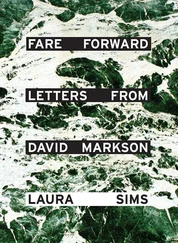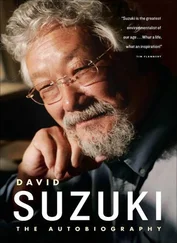“Romme has had business dealings with the Democratic People’s Republic of Korea for some time, and this vinyl record album is the result of some of that work. Not just business, of course. Heavy North Korean technology is made manifest here. The Korean characters translate as ‘The sagacious’—or possibly ‘The discerning’—‘use of insects in hearing technology.’ Romme’s North Korean partners are not quite as whimsical or poetic as he is.” She slipped on a pair of delicate white cloth gloves that she took from her pocket and slowly, dramatically pulled the thirty-threeand-a-third licorice-colored vinyl disc from its sleeve. “This is the very first iteration of Listen to the Crickets in Europe. It might well be the only one at the moment. More will ineluctably follow.”
“But what is it? Is it a compendium of insect sounds? Is it connected with the Entomological Society of Korea?”
“No,” said Elke. “It’s a tool created for programming hearing instruments in ways that their designers never imagined.”
A completely retro vinyl recording interfacing with sophisticated digital hearing aids and their proprietary digital fitting platforms—I couldn’t imagine it either. But then, I didn’t have to, because five minutes later I was hooked up to Romme Vertegaal’s North Korean venture and in the process of being… tuned.
“THERE ARE NOW laser turntables that do away entirely with mechanical tonearms and diamond needles and cartridges,” said Elke, as she looped the lanyard of the Connexx wireless controller around my neck. “Using one of those would certainly make life easier for us humble audiologists who simply want to use the Vertegaal tuning method. But Romme won’t have it. Each of us was forced to invest in one of these exotic monstrosities. They’re hideously expensive and difficult to maintain, and that’s why there are not many of us who do what I’m about to do for you. This one is over twenty years old. They were all created by an Israeli woman named Judith Spotheim-Koreneef who worked out of Eindhoven, Holland. Romme optimized Crickets to the audio parameters of her machines using the only sample in Asia at the time. There are a few more there now.”
We were enclosed in Audio Booth 4, basically an audio recording cabinet floating on foam and designed to be sound-neutral. Words spoken in Booth 4 sounded unnaturally deadened, like inanimate objects. The walls of the booth, the floor, the ceiling, none of it added any energy or shape by reflectance or geometry to the sounds that came out of our mouths, and this had a mysterious effect on the meaning and the impact of the words themselves that was hard to calculate. It made me realize that total neutrality in human communication is destabilizing; there is a paper to be written there.
In front of me sat an enormous and complex device which could be called, simply, a record player, but whose presence was more like that of an impossibly gigantic specimen of zooplankton. Its use of translucent acrylic for its massive platter and various blocks and cylinders; stainless steel for the weights embedded around the periphery of that platter; titanium for its delicate, multi-counterweighted pickup arm; and threadlike drive belts and electrical filaments, culminated in a coruscating, predatory structure that seemed best fitted for frenetic submarine life. Once Elke switched on the controller resting on my sternum, I was apparently linked wirelessly to this thing, and both of us to Elke’s desktop computer and the Siemens Connexx Trainable-Hearing-Instrument Fitting Programming Interface. She now washed the vinyl disc in a Spin-Clean Record Washer—a yellow plastic trough with rollers and brushes filled with distilled water and one capful of vinyl-washing fluid—lovingly turning the disc on the rollers with gloved fingers, three times clockwise, three times counterclockwise, then removing and drying it with delicate pats of a pristine white, lint-free cotton cloth drawn from a drawer with rubber seals meant to keep dust out. Clamp the disc to the platter with the acrylic puck, flick up the retro toggle power-switch in its steel housing, gently lower the tiny coffin-like myrtlewood cartridge into the vinyl groove, and… nothing. I heard nothing.
“I hear nothing,” I said, but to no one, because Elke had left the booth, closing the double doors with a whoosh of expelled atmosphere and leaving me in a vacuum. I could just see her through one of the two triple-glazed portholes in the wall, starting to work the Connexx program almost before she had fully settled into the Aeron. I had come to the Jungebluth (there were partner audiologists I never got to meet) to derail my complicity in Célestine’s delusions about Romme, about the insects in her breast, about Pyongyang, assuming that my inquiries there would deliver some proof that Romme was living in Paris or Rome and that he had not been kidnapped by any of the Kims, and that he was not the director of Judicious . This would naturally have encouraged a gentle easing of Célestine out of her compelling body narrative, perhaps with the shock treatment of a meeting with Romme in our apartment once I had contacted him. Would there arise some sort of Capgras syndrome response from her, a denial that the Romme I presented her with was the real Romme? Would she claim that he was an imposter surgically created by the Kims in order to delude the world and, specifically, delude Célestine? These, then, were my own fantasies, which were summarily crushed by Elke’s evidence that Romme had spent time in Pyongyang functioning as a technical consultant, that “some kind of filmmaking” was involved, and that he had been “kidnapped”—Elke used the word innocently, unbidden by me—“by the depth and passion of the culture there, mesmerized and delighted to the extent that he wished to live there for an indeterminate length of time.”
I was the one who was delusional, not Célestine; or at least I was haughtily and unjustifiably dismissive of her instincts and her sensitivity to some aberrant realities that neither of us had been capable of conjuring up before. Had her left breast become a bagful of dangerous insects? Was that any less conceivable than the invasion of breast tissue by rampaging rogue milk-duct epithelial cells? Well, yes, of course it was, but what if the “insects” were Célestine’s metaphor for something more medically plausible? What if that was the only way she could express her very real awareness of a unique pathology?
The acrylic platter of the Spotheim-Koreneef device was spinning hypnotically, its corona of glittering weights, like stacks of coins, shimmering with nano-crustacean avidity. And now, through my portholes, I could see the Connexx program reduced to a window on Elke’s monitor, streamers indicating that it was feeding its settings and parameters—everything controlling my Siemens Pure micon receiver-in-the-canal instruments—to another, larger window, which displayed a mixture of Korean syllabic blocks and English words. This was the fitting program devised by Romme and his nameless North Korean Juche comrades which was designed to be used in conjunction with the Crickets album and the neo record player, and to which I had agreed to submit my entire auditory existence for realignment. According to the booth’s Swiss Federal Railways station–style clock, the process took one hour and seventeen minutes, during which time I was projected into a mildly sinister audio landscape of threatening hums, chirps, and stuttering clicks, as well as raspy, non-human breathing (through valved insect spiracles?) and a variety of pulsing, fluid ripplings which suggested the movement of non-human blood through minute, multi-chambered tubular hearts. My interpretation of this auditory world was obviously much shaped by my experience of the Judicious film, Célestine’s inventive pathology, and the album cover, and this interpretation could well have been recorded and analyzed somewhere in the internet ether, because apparently the response of my eardrums and the associated organic machinery inside my head to this soundscape being fed back to the North Korean program (it was called, innocuously, “In Tune with Nature,” I later learned) was tantamount to a reading of my brain’s electrical activity that was much deeper and more meaningful than a normal EEG. I idly wondered if the increasing stress on my shrunken bladder could affect the results and derange my programming; I really had to pee. We had agreed that most of the changes would be funneled to Program 5, my former Music program (which attempted to balance the sounds of all musical instruments and voices as per normal hearing), and that Program 1, Universal, would be left completely untouched for reference. A rocker switch on my left instrument allowed me to cycle through the six programs, which included TV (Program 2), Noisy Environment (Program 3), Outdoor/Sports (Program 4), and Telecoil (Program 6, for special telephone use). I asked Elke to name Program 5 Vertegaal, and that’s how it showed up on the LCD display of my Tek wireless controller.
Читать дальше
Конец ознакомительного отрывка
Купить книгу







![David Jagusson - Fesselspiele mit Meister David [Hardcore BDSM]](/books/486693/david-jagusson-fesselspiele-mit-meister-david-har-thumb.webp)




